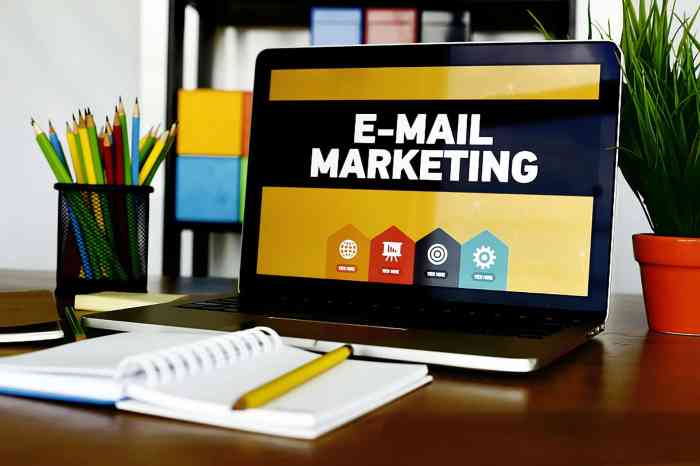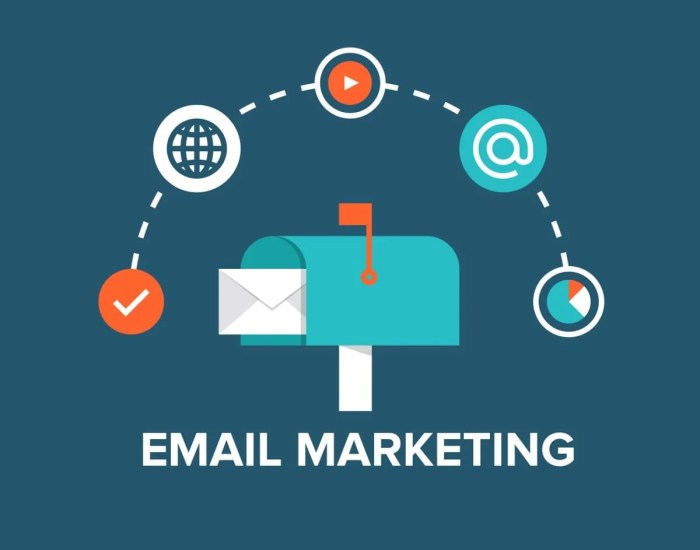Email Marketing Campaigns, a powerful tool for businesses, encompass various strategies aimed at boosting engagement and conversions. From planning to execution, these campaigns play a crucial role in today’s digital marketing landscape.
Overview of Email Marketing Campaigns
Email marketing campaigns are a strategic approach used by businesses to reach their target audience through email messages. The primary purpose of these campaigns is to build relationships with customers, promote products or services, and drive conversions.
Benefits of Email Marketing Campaigns
- Cost-effective: Compared to traditional marketing channels, email marketing campaigns are relatively inexpensive to execute.
- Targeted messaging: Businesses can segment their email lists based on demographics, behaviors, or past interactions to send personalized messages.
- Measurable results: Marketers can track open rates, click-through rates, and conversion rates to analyze the effectiveness of their campaigns.
- Increased brand awareness: Consistent communication through email helps businesses stay top-of-mind with their audience.
Effectiveness of Email Marketing Campaigns
- According to a study by DMA, email marketing has an average ROI of $42 for every $1 spent.
- HubSpot reports that personalized subject lines increase open rates by 26%.
- Email is the preferred communication channel for 59% of consumers when receiving promotional content.
Planning an Email Marketing Campaign

When planning an email marketing campaign, there are several key steps to consider in order to ensure its success. Setting clear goals and objectives, as well as segmenting the target audience for personalized campaigns, are crucial aspects to focus on.
Setting Goals and Objectives
Setting goals and objectives is the foundation of any successful email marketing campaign. It is important to define what you want to achieve with your campaign, whether it’s increasing brand awareness, driving website traffic, or boosting sales. Some key steps in setting goals and objectives include:
- Identifying the target audience and their needs
- Establishing key performance indicators (KPIs) to measure success
- Setting specific, measurable, achievable, relevant, and time-bound (SMART) goals
- Aligning goals with overall marketing objectives
Segmenting Target Audience
Segmenting the target audience is essential for creating personalized email campaigns that resonate with recipients. By dividing your audience into smaller, more targeted groups based on demographics, behaviors, or preferences, you can deliver content that is more relevant and engaging. The importance of segmenting the target audience includes:
- Improving open and click-through rates
- Increasing conversion rates
- Reducing unsubscribe rates
- Enhancing overall campaign performance
Creating Engaging Email Content
When it comes to email marketing, creating engaging content is key to catching the attention of your audience. From subject lines to responsive templates, here are some tips to help you craft compelling emails that drive results.
Crafting Compelling Subject Lines
Subject lines are the first thing recipients see when they receive your email, so it’s crucial to make them attention-grabbing. Here are some tips to create compelling subject lines:
- Keep it short and sweet: Aim for around 40-50 characters to ensure the entire subject line is visible on mobile devices.
- Personalize it: Use the recipient’s name or other personalization tactics to make the email feel more tailored to them.
- Create a sense of urgency: Use words like “limited time offer” or “act now” to encourage recipients to open the email right away.
- Avoid spam triggers: Stay away from all caps, excessive punctuation, or words like “free” that may trigger spam filters.
Designing Responsive Email Templates
With more and more people checking their emails on mobile devices, it’s essential to design responsive email templates that look great on any screen size. Here’s why responsive design is crucial:
- Improved user experience: Responsive templates ensure that your emails are easy to read and navigate, no matter what device your recipients are using.
- Higher open rates: Emails that are optimized for mobile devices are more likely to be opened and engaged with by recipients.
- Brand consistency: Responsive design helps maintain brand consistency across different devices, providing a seamless experience for your audience.
Crafting Relevant and Valuable Content
In addition to catchy subject lines and responsive templates, the content of your emails plays a crucial role in driving click-through rates. Here’s how to craft relevant and valuable content that keeps your audience engaged:
- Know your audience: Tailor your content to the interests and needs of your target audience to ensure it resonates with them.
- Provide value: Offer useful information, exclusive offers, or compelling storytelling to give recipients a reason to click through.
- Include clear call-to-actions: Make it easy for recipients to know what action you want them to take next, whether it’s to shop now, learn more, or sign up.
Implementing Email Automation
Implementing email automation is a key strategy for streamlining marketing campaigns and engaging with customers on a more personalized level. By setting up automated emails, businesses can save time, increase efficiency, and deliver relevant content to their audience at the right time.
Types of Automated Emails
- Welcome Sequences: These automated emails are triggered when a new subscriber joins your email list. They are designed to introduce the subscriber to your brand, products, and services.
- Abandoned Cart Emails: These emails are sent to customers who have added items to their cart but did not complete the purchase. They serve as a reminder and can help recover lost sales.
- Drip Campaigns: Drip campaigns are automated series of emails that are sent out over a period of time. They can be used to nurture leads, educate customers, or promote specific products or services.
Tools for Email Automation
- Mailchimp: Mailchimp offers a user-friendly platform for setting up automated email campaigns, with features like segmentation, A/B testing, and analytics.
- HubSpot: HubSpot provides comprehensive marketing automation tools, including email automation, lead scoring, and CRM integration.
- ActiveCampaign: ActiveCampaign is known for its powerful automation features, allowing businesses to create complex workflows and personalized customer journeys.
Measuring and Analyzing Campaign Performance: Email Marketing Campaigns

In order to determine the success of your email marketing campaigns, it’s crucial to measure and analyze key metrics that provide valuable insights into how your audience is engaging with your content. By tracking metrics such as open rates, click-through rates, conversion rates, and ROI, you can make informed decisions on how to optimize your campaigns for better results.
Key Metrics to Track
- Open Rates: This metric indicates the percentage of recipients who opened your email. A high open rate suggests that your subject line and sender name are compelling.
- Click-Through Rates: The click-through rate measures the percentage of recipients who clicked on a link in your email. It shows how engaging your content is and how effective your call-to-action is.
- Conversion Rates: Conversion rates track the percentage of recipients who completed a desired action, such as making a purchase or signing up for a webinar. This metric directly ties email engagement to business outcomes.
- ROI (Return on Investment): ROI measures the profitability of your email marketing campaigns by comparing the revenue generated from email efforts to the overall cost of running those campaigns.
Analyzing Campaign Performance
- Use A/B Testing: A/B testing involves sending two versions of an email to different segments of your audience to see which performs better. By testing variables such as subject lines, content, and calls-to-action, you can optimize your campaigns based on data-driven insights.
Compliance and Best Practices
When it comes to email marketing, following regulations like GDPR and CAN-SPAM is crucial to maintain trust with your audience and avoid legal issues.
Importance of Compliance
Complying with GDPR ensures that you have explicit consent from recipients before sending them emails, protecting their personal data and privacy.
Following CAN-SPAM regulations helps in preventing spammy practices like misleading subject lines and lack of unsubscribe options, ultimately building credibility for your brand.
Maintaining a Healthy Email List
Regularly clean your email list by removing inactive subscribers to improve engagement rates and avoid being marked as spam.
Use double opt-in to verify subscribers’ intentions and prevent fake or incorrect email addresses from cluttering your list.
Ensuring Email Deliverability
Avoid using spam trigger words in your subject lines and content to prevent your emails from getting caught in spam filters.
Optimize your email sending frequency to prevent overwhelming your subscribers and ensure your emails are being delivered to the inbox.












